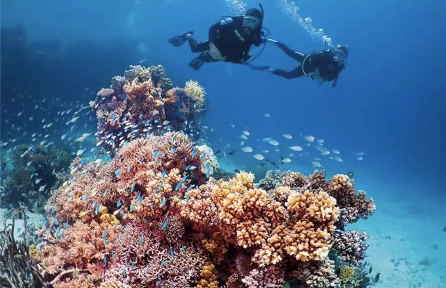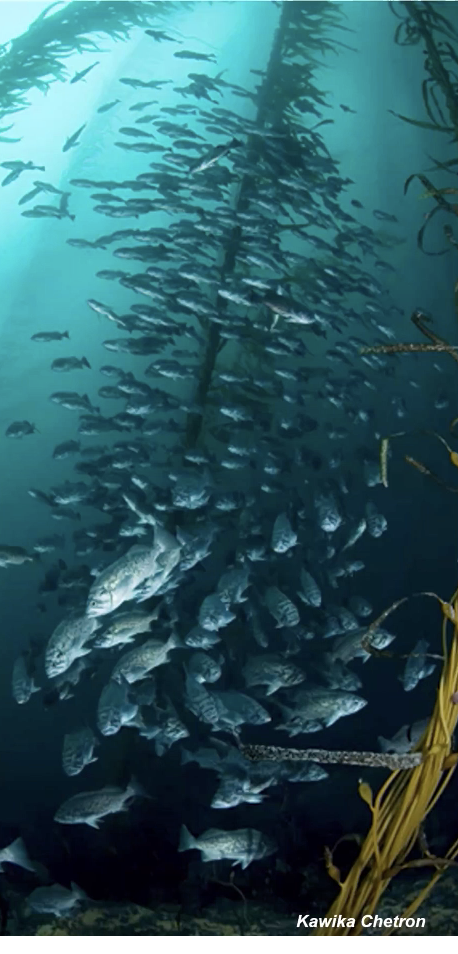
Coral reefs are one of the most diverse ecosystems on our planet, but they are also one of the most fragile. Susceptible to coral bleaching, climate change, and other forms of pollution, all we can do now is watch and hope for a miracle. Protecting our oceans has become a more common trend than we think.
The Oregon State University Hatfield Marine Science Center (HMSC) did a Research Seminar on marine protected areas in a dynamic and changing world on the 19th of November. Due to Covid, it had to be a virtual seminar but the speaker, Jess Hopf a Ph.D., Postdoctoral Scholar at Oregon State University, made it very interesting and informative. She uses case studies to explain the changes marine ecosystems have been facing, and how protecting them is important. These studies take place in both the United States California coast and in Australia’s Great Barrier Reef area.
The oceans are one of the last frontiers on our planet. Very little of it has been explored and every year we find out more and more extraordinary things about it. One of the most astonishing things that I learned was that there are coral reefs in the Arctic Ocean. They can be just as beautiful as the reefs in Australia, but another thing they have in common is that they are being affected by coral bleaching and other climate change effects. It makes you want to think that there is no chance for these ecosystems to thrive once again. But after listening to this seminar, and the positivity it spread, I know we have a chance to save our most fragile ecosystems: the coral reefs.

Hopf split the talk into two parts, first is the biology of fish and other organisms, and the second on reserves and protecting marine ecosystems. She starts her seminar with positive news that over the last decade marine reserves and protected areas have been steadily increasing. 7.7% of our world’s oceans are Marine Protected Areas (MPA) and 2.8% are no-take areas and reserves where it is illegal to take and destroy habitat and resources in these areas. These reserves and MPAs allow targeted species such as bass and tuna to recover their numbers. They also have increased biodiversity and healthier habitats. They are primarily a conservation and management strategy that is used all over the world to help promote biodiversity, fish populations, and how climate change can affect these marine areas.
The reserves and MPAs are created after modeling theories where they can predict certain outcomes and data analysis where they are able to tell us what is affecting these areas and what we need to do to keep them stable. These techniques help scientists be adaptive in their management strategies in this changing world. One event they look for that can happen every three through six years is a recruitment event. This is the time period where fish settle in a certain area such as a coral reef. This gives scientists a chance to increase a species population by protecting larvae and the young. These types of projects will not show results the first time around but they have the ability to save a species.

So what areas deserve protection? Well in my opinion all coral reefs should be under an MPA but this is a hard task to achieve. Hopf explained that places like the Keppel Islands of the Great Barrier Reef, are more susceptible to disturbances and should receive protection. To keep the population diversity and the habitat healthy, it is good to protect both disturbed and undisturbed areas just to mix things up. If we were to only protect disturbed areas the more pristine and healthy sites will then become the brunt of exploitation.
Hopf gave us the positives of MPAs and reserves. She also gave us the importance of protecting not just susceptible areas. It will take time for the MPAs to show their benefits but when that time comes it will be a win for the coral reefs and the species that live in them. Overall, this was a great seminar to attend. It gives those who are worried about the destruction of the world’s coral reefs, a sense that we as humans, may change. Creating a more sustainable world where fewer species are vulnerable will always take time. But if we start now I know that we can allow future generations to grow up and experience the wonderful natural features this world has to offer. That is a future I am willing to fight for.
Now, comes the focus of Hopf’s presentation; how does climate change affect these MPA and reserves? Well, Hopf continued to remain positive that MPAs still have the ability to increase species populations and save them from extinction. She shifted gears from American reefs to her specific case study in the Great Barrier Reef of Australia. 33% of the Great Barrier Reef is in an MPA. Hopf’s biggest concerns for these areas are tropical storms, crown-of-thorns or coral-eating starfish, and coral bleaching. The main species in the case study is the coral trout. When Hopf saw major disturbances in the reef, such as coral bleaching and flooding, there was a decline in the trout population. If a population of coral trout is not in an MPA, then most of them are of a younger age which leaves them vulnerable to disturbances. This can lower the reproductivity of that population leading to its possible extinction. When a population is in a reserve or MPA it creates an age structure that can keep a population stable and less likely to collapse due to disturbances.
